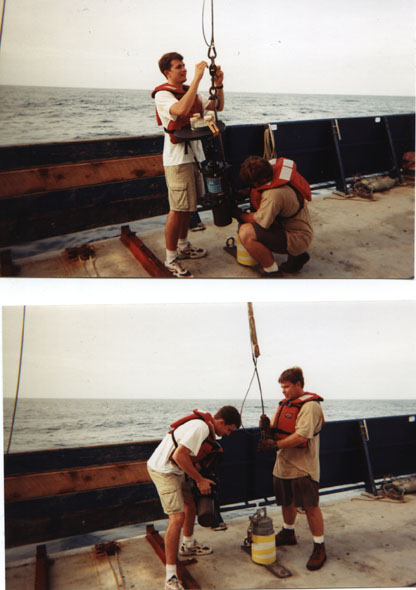
Paleoceanographic use of the alkenone unsaturation ratio (UK'37) to reconstruct past sea surface temperatures (SSTs) relies on a linear correlation between UK'37 and growth temperature, which is assumed to be SST. If alkenones are significantly produced in the thermocline, their growth temperature is below surface mixed layer temperature. This lower growth temperature might influence calibration of the UK'37-temperature relationship, especially in regions where there is temporal variability in thermocline structure. To evaluate the depth of alkenone production, samples of suspended particulate matter from various depths at two sites in the Eastern Tropical North Pacific were analyzed for the total concentration of C37 alkenones and the alkenone unsaturation ratio (UK'37). Alkenone production was inferred from alkenone concentration on the assumption that only a small proportion of alkenones at depths within the euphotic zone are derived from sinking particles. Results show that alkenone production at these sites occurs in both the surface mixed layer and in the thermocline. Data suggest that the majority of production may occur in the surface mixed layer, but some ambiguity as to the depth of maximum production exists in the data. Alkenone production appears to occur at generally shallower depths than the chlorophyll-a maximum as recorded by an in situ fluorometer. Alkenone temperatures (calculated from UK'37 using Prahl et al.'s [1988] calibration) track in situ temperatures down to 100m with a warm bias of 0.5 to 3°C. Using only the linear part of the calibration curve, a recalibration was calculated for suspended particulate matter in the Eastern Tropical North Pacific. This calibration differs substantially from Prahl et al.'s (1988) calibration, which matches a core-top calibrations from all oceans, 60°S to 60°N, 0°C to 28°C (Mčller et al., 1988).

Go to Science Research Projects.
Go to Learning Objectives of Research Project.
Return to E&ESJ home page.
Last updated: 21 December 2000, KAK.